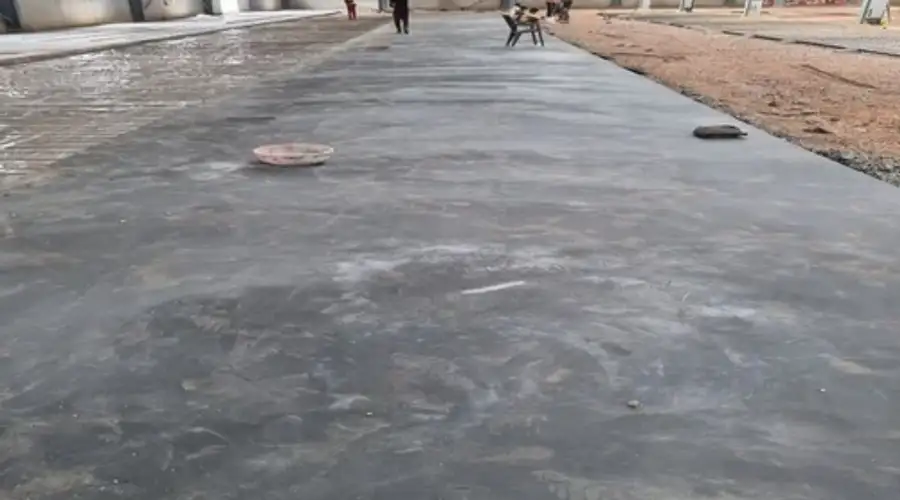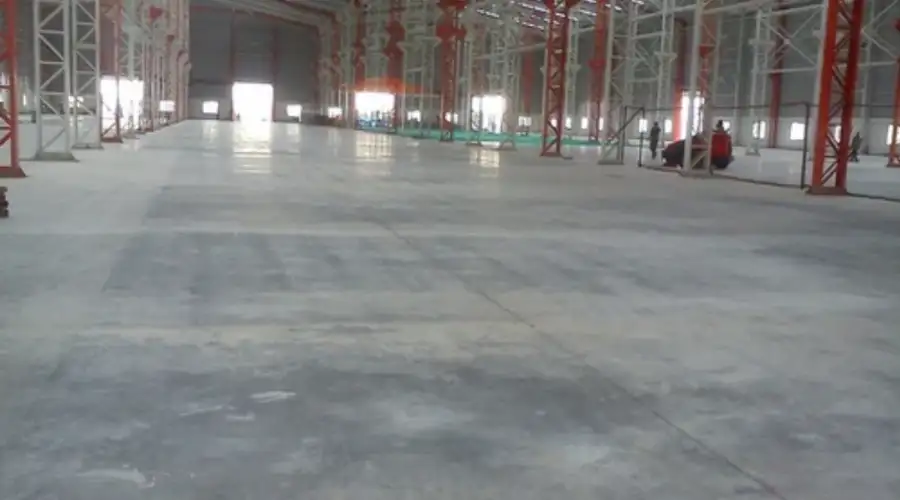In construction, the quest for having strong and long-lasting flooring is unending. Trimix flooring has emerged as a popular choice because of its durable, cost-effective, and reliable properties. Its high resistance to wear and tear attracted more builders and engineers to use this flooring in their construction projects.
This Brick & Bolt article will explain what trimix flooring is, its benefits, the place it is used, and why it’s a top choice for modern buildings.
What is Trimix Flooring?
Trimix flooring is a special kind of flooring used for industrial, commercial, and residential purposes. It is also known as vacuum-dewatered flooring. In residential projects, this flooring is used to cover high-traffic areas for long durations.
In industrial and commercial projects, this flooring is ideal for locations where light cranes, carrier vehicles, and heavy machines frequently move. A 1:1.5:3 mix (1 part cement, 1.5 parts sand, and 3 parts stone) makes the flooring more durable, while a 1:1:2 mix is used for extra strength.
Key Components of Trimix Flooring
The key components of Trimix flooring are explained as follows:
Cement: Portland cement is utilised for the Trimix flooring, which provides immense strength and durability for huge traffic and loads so that it can endure extensively.
Aggregates: For more strength and durability, large stones of granite or quartz are mixed to make it suitable for areas of heavy machinery or significant foot traffic.
Admixtures: Plasticisers increase their workability, and accelerators speed up the drying process for better flooring performance.
Equipment Required to Install Trimix Flooring
The equipment used to install trimix flooring is as follows:
- Double Beam Screed Vibrator
It makes RCC flooring even and compact by filling gaps and increasing strength.
- Vacuum Pumps (7.5 HP & 5 HP)
These pumps remove trapped air bubbles from the concrete, which enables the cement to settle properly. They use three mats (filter, suction, and top) to remove excess water while keeping the cement in place, which makes the floor stronger.
- Floater Cum Trowel:
A 3 HP motor-powered trowel delivers a smooth, polished finish on the flooring. It is ruggedly designed and has a sturdy 4 mm finishing plate to withstand tough conditions. Floating can be easily swapped with troweling.
Installation of Trimix Flooring
Trimix flooring follows some specified process to get installed as explained here.
- Surface Preparation:
Ensure the surface is clean, even, and free of any debris. A well-prepared base helps the trimix layer adhere properly.
- Mixing and Pouring:
In the mixing process, cement, aggregates, and admixtures are combined and poured onto the surface. For a consistent finish, workers spread the mixture evenly across the surface.
- Spreading and Compaction:
The mix is spread and compacted to remove air pockets and ensure strong flooring.
- Vacuum Dewatering:
A vacuum pump removes extra water, making the floor denser and more durable.
- Curing:
For long-lasting use, the floor is left to set and harden, reaching maximum strength.
Laying Process of Trimix Flooring
The laying procedure of trimix flooring includes some crucial steps, from preparing the base to filling the gaps with sealants.
Prepare the Base:
- Wet and compact the sub-base to remove loose debris.
- Lay 230-300 mm of stone or boulder soling on a level surface and compact it properly.
PCC Layer:
- Pour PCC over the stone soling, keeping a slight slope.
- PCC should not exceed 100 mm in thickness.
Trimix Process:
- Work in 3.5-meter sections (modules).
- Place 1-2 layers of reinforcement bars with a 50 mm concrete cover.
Vacuum Dewatering:
- Use machines to remove extra water from wet concrete without affecting cement or sand.
- This is done right after ramming or vibrating to level the floor.
Strengthening & Finishing:
- Troweling strengthens the concrete and makes it more durable.
- Apply a hardener with a floater machine for abrasion resistance.
- Add small amounts of floor hardener and polyurethane fibres to prevent cracks.
Panelling for Large Areas:
- Large floors are cast in sections to prevent shrinkage cracks and allow expansion.
- After 7-10 days, cut panel joints using a saw and fill gaps with sealants or polysulfide.
Applications of Trimix Flooring
Trimix flooring can be used in various sectors like residential, commercial, and industrial.
Residential Use of Trimix Flooring

In residential projects, builders can use trimix flooring in frequently high-traffic areas like pavements, gardens, patios, parking lots, etc. Because they are excellent for wear and tear, they are durable and long-lasting for years.
Commercial Use of Trimix Flooring

In commercial spaces like restaurants, malls, retail stores, airports, sports centres, and offices, trimix flooring is essential for managing high foot traffic.
Industrial Use of Trimix Flooring
In industries, heavy equipment and machines are installed over the trimix flooring surface. Warehouses, garages, and other industrial outlets often use trimix flooring.
Maintenance of Trimix Flooring
Maintaining trimix flooring is easy with frequent care. Regular sweeping and cleaning remove dust and dirt, ensuring the floor remains in good condition for a long time. Periodically resealing the floor gives protection, keeps it shiny, and prevents stains, which is very helpful in busy areas.
For places that have heavy machinery, concrete densifiers can be used to enhance the floor strength and durability. The right cleaning tools and products are also very essential to avoid damage. Proper care helps trimix flooring stay in good shape for longer periods, thereby saving businesses and homeowners a lot of money in the long run.
Trimix Flooring vs Other Flooring Options

The comparison between trimix flooring and traditional flooring is as follows:
| S.No | Feature | Trimix Flooring | Traditional Concrete Flooring |
| 1 | Thickness | 125 mm (Thicker and Stronger) | 25-50 mm (Thinner and Weaker) |
| 2 | Strength & Durability | Highly durable, lasts longer | More likely to crack, less durable |
| 3 | Cost | ₹120 per sq. ft. (Higher but worth it) | Cheaper, but needs frequent repairs |
| 4 | Best For | Warehouses, schools, hospitals, industries | Homes and small commercial spaces |
| 5 | Maintenance | Low upkeep, no waxing needed | Needs regular waxing and repairs |
| 6 | Moisture Resistance | Resists spills and moisture well | Can absorb water and get damaged |
| 7 | Reinforcement | Steel reinforcement for extra strength | No reinforcement, weaker under stress |
| 8 | Overall Choice | Best for high-use, heavy-load areas | Good for basic flooring needs |
Conclusion
Trimix flooring is modern and strong flooring that is designed specifically for residential, industrial, and commercial spaces. The structure is usually thick and reinforced, which makes it much stronger than concrete, thus staying long without maintenance. It has a special installation that guarantees considerable strength, a smooth finish, and resistance to heavy loads and moisture. Although it is more expensive to install, the lower maintenance and durability of the flooring make it a great choice for builders, businesses, and homeowners.

